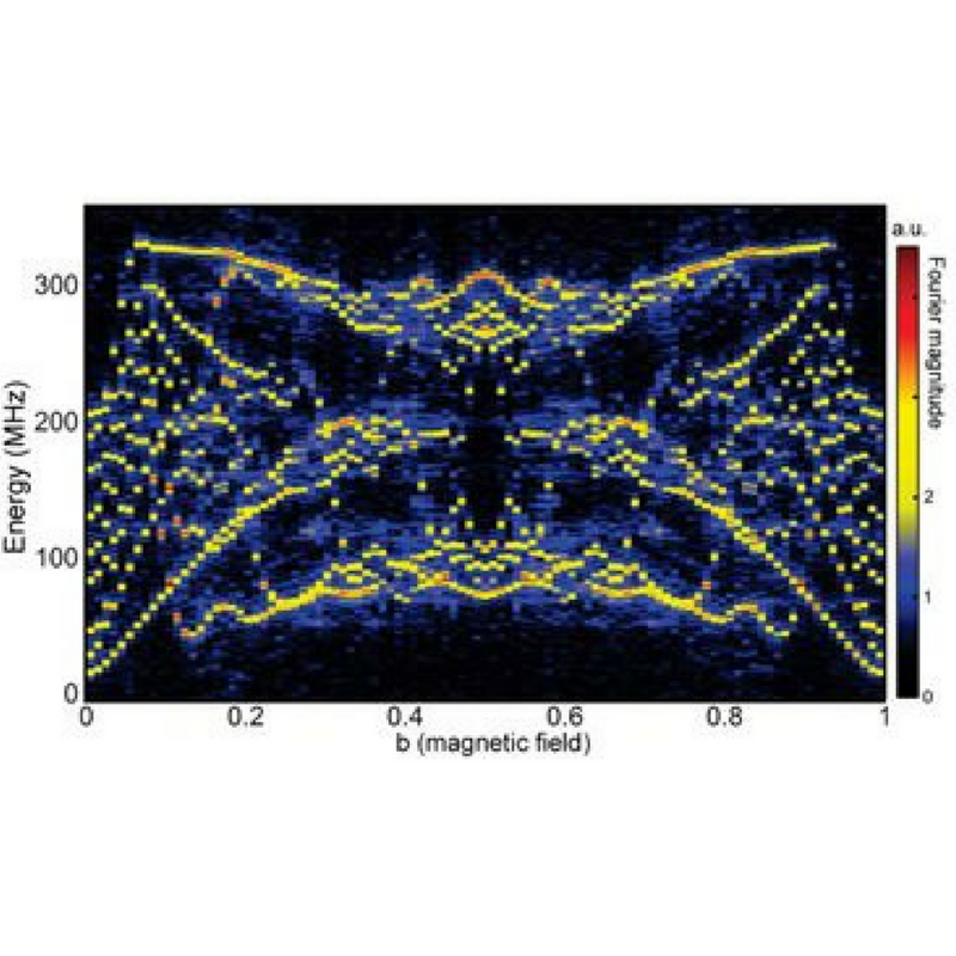Statistical mechanics is founded on the assumption that a system can reach thermal equilibrium, regardless of the starting state. Interactions between particles facilitate thermalization, but, can interacting systems always equilibrate regardless of parameter values? The energy spectrum of a system can answer this question and reveal the nature of the underlying phases. However, most experimental techniques only indirectly probe the many-body energy spectrum. Using a chain of nine superconducting qubits, we implement a novel technique for directly resolving the energy levels of interacting photons. We benchmark this method by capturing the intricate energy spectrum predicted for 2D electrons in a magnetic field, the Hofstadter butterfly. By increasing disorder, the spatial extent of energy eigenstates at the edge of the energy band shrink, suggesting the formation of a mobility edge. At strong disorder, the energy levels cease to repel one another and their statistics approaches a Poisson distribution -the hallmark of transition from the thermal to the many-body localized phase. Our work introduces a new many-body spectroscopy technique to study quantum phases of matter.
Talk on Spectral signatures of many-body localization of interacting photons
27.06.2017 12:30 - 14:00
Organiser:
Hosted by: Philip Walther
Location:
Lise Meitner lecture hall, 1st floor; Boltzmanngasse 5, 1090 Vienna

Using 9 superconducting qubits, we simulate the problem of Bloch electrons on a 2D lattice subject to a perpendicularly applied magnetic field. We directly measure the energy spectrum of the system, which was first calculated by Hofstadter and resembles a butterfly.
